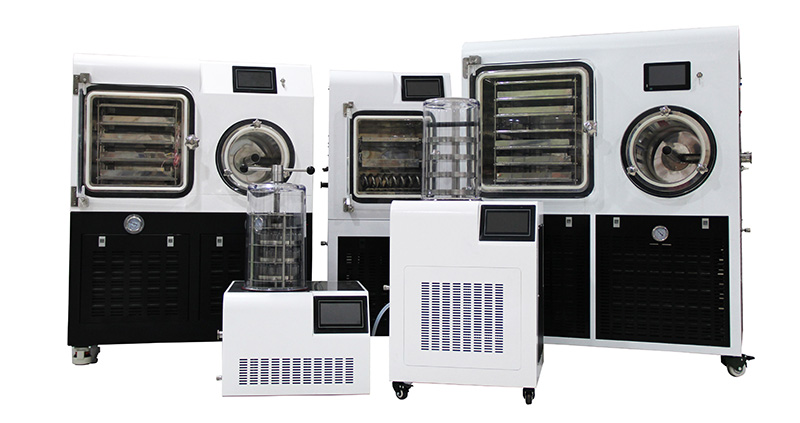1. Eutectic temperature (Te)
When a solution reaches a certain temperature or temperature range, its liquid state and the components in the formed solid state are completely the same. At this time, the solution is called an eutectic solution, and the temperature or temperature range at this time is called the eutectic point or eutectic zone of the solution, also known as the complete solidification temperature. It is the highest temperature at which the product transitions from the liquid state to the solid state during the cooling process.
During the freezing process, the solution needs to be supercooled below the freezing point to form a supercooled liquid. After crystal nuclei are formed inside, free water begins to crystallize in the form of pure ice, and at the same time, crystallization heat is released (if a temperature probe detects it, the temperature will rise), causing its temperature to rise to the freezing point. As the crystal grows, the solution concentration increases. When the concentration reaches the eutectic concentration and the temperature drops below the eutectic point, the solution freezes completely, Forming a crystal structure.
Collapse temperature (Tc): during freeze-drying, when the temperature of the drying layer rises to a certain value, the ice crystals in the material disappear, and the space originally occupied by the ice crystals becomes a cavity. Therefore, the freeze-drying layer is a porous honeycomb Cavernous tissue structure, which is related to temperature. When the solid substrate temperature of the honeycomb structure is high, its rigidity decreases. When the temperature reaches a certain critical value, the rigidity of the solid matrix is insufficient to maintain the honeycomb like structure, and the solid matrix wall of the cavity will collapse. The original channel for steam diffusion will be closed, and this critical temperature is called the collapse temperature or collapse temperature of the freeze-dried material.
Glass transition temperature (Tg '): The glass transition temperature during the freeze-drying process refers to the glass transition temperature of the maximum frozen concentrate. In amorphous structural materials, the arrangement of atoms, ions, or molecules is irregular. Due to the precipitation of ice crystals during the freezing process, the concentration of the remaining solution gradually increases. When a certain concentration is reached, the remaining water no longer crystallizes. At this point, the solution reaches the maximum frozen concentration state, and the corresponding temperature is called the glass transition temperature of the maximum frozen concentration solution. The vast majority of products have an amorphous structure, while a small portion of products have a crystalline or mixed structure. In addition to being related to the product formula, the structure is also related to the pre freezing temperature and speed.
Prefreeze at Tg 'temperature to form an amorphous structure;
The crystal structure is formed by pre freezing above Tg 'temperature and below Te temperature.
The crystal structure can be freeze-dried faster and easier, but its stability and solubility are slightly poor;
Freeze-drying of amorphous structures is difficult, but it has good stability and solubility.
In general, the collapse temperature (Tc)>specific eutectic point temperature (Te)>glass transition temperature Tg '.
In most cases, the collapse temperature (Tc) is about 20K higher than the glass transition temperature Tg '.
Before sublimation of freeze-dried products, they must be frozen to a certain temperature, which should be set at around 10 to 20 ℃ below the solidification temperature of the product.
The solidification temperature mainly depends on the state that needs to be solidified during the freeze-drying process of the sample, whether it is a crystal structure or an amorphous structure.
The crystal structure corresponds to a temperature of Te;
The amorphous structure corresponds to a temperature of Tg '.


 Alibaba Store
Alibaba Store Tmall Store
Tmall Store Jingdong Sstore
Jingdong Sstore







